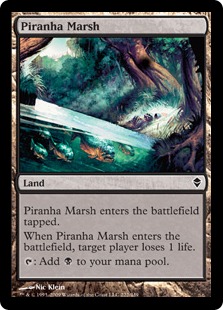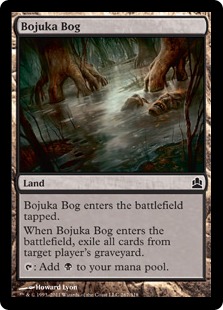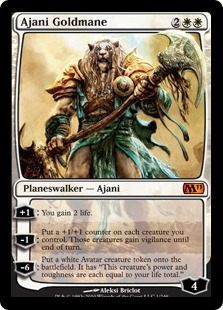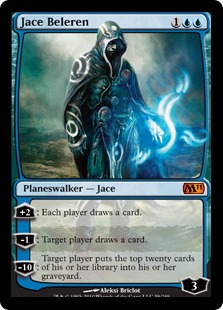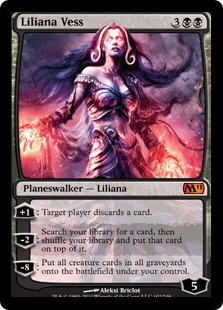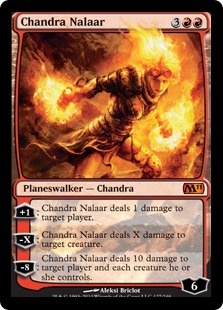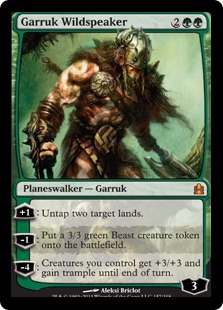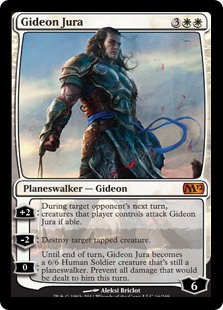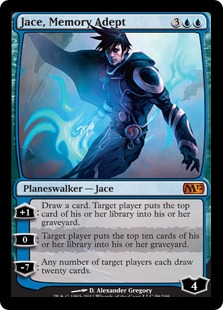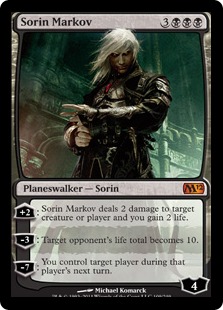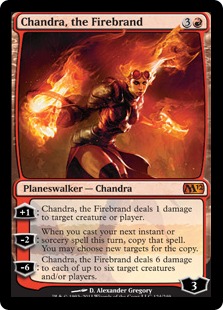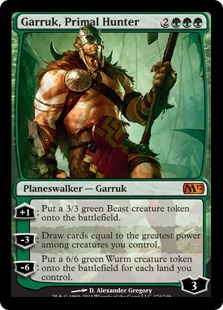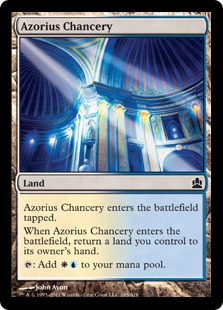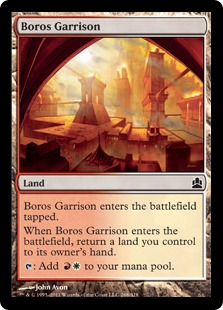In talking to me about Cube, someone asked me how one should determine what cards in cycles should be used, asking if all of the Lorwyn Commands should be used in a cube. The short answer is: “Just use the really good ones: Cryptic and Profane. Maybe use Austere if your cube is on the larger side.” But that’d make for a terrible article.
In cube design, we can learn lessons from innocuous places, and the question itself addresses a very interesting point when it comes to cube—the role of cycles and how they manifest in cube.
Cycles have been in Magic from the days of Alpha, which contained seven cycles and three vertical ones. One of the more notorious ones was its one-mana “boon” cycle, which gave Ancestral Recall to blue and gave white… Healing Salve. Humans are naturally drawn to symmetry, and cycles encompass the Magic equivalent of symmetry (at least in theory).
Cycles can be very hard to balance especially since cube designers can’t tinker with the cards in the same way that R&D can. Still, they can be useful if used correctly.
Cycles and the Semblance of Balance
It’s easy to say that all parts of a cycle are not going to be equal. Ancestral is miles better than Dark Ritual and Lightning Bolt, yet both Dark Ritual and Lightning Bolt are solid cube cards. However, it’s more important to note that it can be very tempting to use cards just because they complete a cycle, and you may end up having suboptimal cards stay longer in your cube than they should.
The concept of “free riders” in economics touches on this, where members of a group receive benefit not based on their output but based on that of the other members of the group. In a cube cycle, cards that aren’t pulling their weight may stay in a cube on the strengths of other members of a cycle. “Plain English, please!” you ask? Here’s an example from my cube:
I used to run a cycle of two-color-aligned lands in my powered cube with two lands in each color so that no color would be overly represented.
White: Kjeldoran Outpost and Kor Haven
Blue: Shelldock Isle and Faerie Conclave
Black: Volrath’s Stronghold and Urborg, Tomb of Yawgmoth
Red: Barbarian Ring and Ghitu Encampment
Green: Treetop Village and Gaea’s Cradle
What ended up happening was that while lands like Volrath’s Stronghold and Treetop Village were great, cards like Gaea’s Cradle weren’t doing very much. Cards in the second tier of color-aligned lands like Ghitu Encampment and Shelldock Isle were performing well, but ones like Gaea’s Cradle and Kor Haven weren’t holding up their end of the bargain. However, since they were part of the color-aligned land cycle, I kept them in for longer than I should have (Cradle especially, which only performed well once). In other words, Gaea’s Cradle and Kor Haven (and arguably Urborg, Tomb of Yawgmoth) were free riders in my cube.
I decided that I didn’t want to have those free riders in my cube anymore, even though Ghitu Encampment and Shelldock Isle were painful cuts. Still, cutting them improved the overall power of my cube, as it allowed me to cut the weaker cards. Once I cut the weaker color-aligned lands, I never looked back.
When I was using a color-aligned land cycle in my commons cube, I used a similar color-aligned land cycle:
White: Sejiri Steppe (or Kabira Crossroads.)
Blue: Halimar Depths
Red: Teetering Peaks
Green: Khalni Garden
Black: ???
As I was already using all of the Onslaught and all of the Urza’s Saga cycling lands, black’s only options were the terrible Piranha Marsh and Bojuka Bog. In the grand scheme of things, both cards weren’t very good, but both cards had their respective talking points—Bojuka Bog was graveyard hate that didn’t even take up a spell slot, and Piranha Marsh could act as direct damage while making land drops. At the time, I used Piranha Marsh. I had finally found my black color-aligned land! But look closer.
I looked at the Marsh as a black member of the ‘land’ cycle. To me, it held an important role in my cube. It was colorless damage and helped black aggressive decks, at least in my mind. But to people who drafted my cube? They saw it as a terrible 15th pick.
Even if Bojuka Bog was better (and in retrospect, it is), both cards fail the tenet of cube; these cards fail at being the best cards in the game. The Bog has its talking points of it being a card that hoses graveyard cards like Death Denied, Momentary Blink, and Mystical Teachings, but those talking points still don’t necessarily make it a good card. The Bog will still be a 15th pick often, and its true contribution to a cube will be little more than a hollow place as a member of a cycle.
When I decided to move lands to their appropriate color sections, I was extremely glad to get rid of the Bog (and in retrospect, cards like Khalni Garden and Sejiri Steppe weren’t really that great either, but I kept them in mainly on the strength of Halimar Depths and Teetering Peaks with the bad cards being free riders on the quality of other cards in the cycle). Trimming these cycles resulted in jettisoning these suboptimal cards, resulting in fewer dead picks and overall stronger cubes.
The problem with these kinds of cycles is that they’re started with the best of intentions, usually when a part of a cycle has a good card or a set of good cards—the “blue lands” are a good example, as there are a lot of good options like Faerie Conclave, Tolarian Academy, Shelldock Isle, and Academy Ruins—so someone may start using a color-aligned land cycle with several lands so that blue has access to all of those cards.
The idea of using color-aligned isn’t a bad idea in and of itself, as it makes sure that colors like blue don’t get extra free cards. It saddens a little when I see land sections with every blue-aligned land but no white or red counterparts, since this essentially gives blue more cards than the other colors. However, when the components of a cycle that are meant to be equal across all parts result in weak cube cards free-riding their way into a cube, it is a disservice to a cube.
However, it’s important to note that considering cards as members of a cycle may not even really matter in the grand scheme if you’re planning on just using all of the cards anyway. In my common cube, I’m using all of the color-aligned Golems (Oxidda Golem, Tangle Golem, Spire Golem, Razor Golem, Dross Golem) because they’re all solid creatures for my commons cube. There may come a day when one of the Golems isn’t good enough for my common cube, but when that day happens, I’m not going to suddenly throw the Golems out with the bath water. I’d just toss the suboptimal Golem out of my cube, whereas if I were intent on keeping the Golem cycle together, taking out all of the Golems just because one isn’t pulling its weight would be a bad idea.
For those of you who have ‘regular’ cubes:
The Lorwyn and “M12” planeswalkers’ respective cycles are intact in many cubes, as all of them are very solid cards. Much like with the common Golem cycle, this isn’t necessarily a bad thing. Someone can say “I’m running all of the Lorwyn and M12 planeswalkers in my cube,” and their cube plays no differently than if the person didn’t care about cycles.
But let’s say that in Innistrad block, black gets so many good cards that Liliana Vess’s days are numbered (and not necessarily because of the speculated ‘new Liliana’ and whether it’s better than Vess, as I’m not really a fan of curtailing the number of planeswalkers for power reasons). If you were to choose to keep Liliana Vess in your cube in the face of better cards solely to maintain the Lorwyn planeswalker cycle, it’d be doing a disservice to your cube.
It can be easy for cube designers to get caught up in the designer point of view—seeing a cube in the big picture point of view and forgetting the individual’s point of view seen from the trenches—as cycles are generally more interesting for those on the designer side. For a less abstract example, think about when you drafted the Shadowmoor side of the Lorwyn block. If you drafted it or even were a casual observer of the format, how much did you care about the cycles such as the allied-color Scarecrow cycle (such as Blazethorn Scarecrow), the allied color Aura cycle (Shield of the Oversoul), the Wisp cycle (such as Niveous Wisps), and the other countless other cycles in the set?
It was interesting to see how certain colors/pairs manifested themselves in the set—Niveous Wisps supplementing the strong white tempo theme in the set, Cerulean Wisps representing the tricky nature of the color. But when you were drafting the sets themselves, did you care about how Thornwitch Scarecrow represented the themes in W/G or did you just consider it to be a low-end draft card? R&D has to keep these cards in sets for logistical reasons, appealing to different psychographics and other such issues. However, as a cube designer, you are not shackled by these same reasons!
These factors are important in set design from a Johnny and Timmy point of view, but it’s important to realize a cube is, in essence, Spike incarnate. Most people drafting a cube are generally interested in winning, despite the casual nature of the format. This isn’t as much the case with more casually-oriented cubes such as tribal cubes and the cycle themes may be more welcomed in those cubes. In either case, it is very important to note the points of view from your cube’s drafters and that it may be different from what you are thinking about from a design point of view.
Breaking Down Cycles
My initial discussion on using only Cryptic and Profane Command in a cube is the easiest example of breaking down cycles in a cube. It’s very difficult for all parts of a printed cycle to be equal even when R&D can tinker with the abilities, but cycles like the M11/M12 Titan cycle got that right, with each Titan having its time in the sun in Standard. Many other cycles however don’t fare as well with cards like Incendiary Command falling way behind its Cryptic and Profane counterparts.
Looking at mana fixers from a holistic point of view and understanding their strengths and weaknesses brings another idea to the party—that mana-fixing cycles don’t need to be completely intact. This doesn’t mean that I’m advocating non-balance in cube and that you should use every available fixer, even if it results with U/B having twice the fixers that R/W has, since that fosters imbalance. In an article that I wrote a while ago, I talked about various methods of categorizing multicolor aligned cards in cube, like Stormbind, Kird Ape, and Raging Ravine.
I’ve summarized them along with a tl;dr chart below and whether to consider the cards as multicolor cards:

Literal: Stormbind is considered to be R/G multicolor because that’s what it says on the card. Kird Ape and Raging Ravine aren’t for that same reason.
Functional: Stormbind and Kird Ape are both considered to be R/G multicolor, since both cards are at their best in R/G decks. Raging Ravine is a land, so it isn’t considered multicolor.
Guild: Stormbind and Kird Ape are multicolor for the same reasons they are functional. But Raging Ravine is also considered to be one because it’s also at its best in R/G decks.
Why bother bringing it up? While it isn’t as easy to see with mana fixers like Raging Ravine, the idea of the guild system and other categorization methods show how a cube can have different mana fixers, using their strengths and weaknesses to create a dynamic cycle in cube.
The bouncelands/Karoos are a perfect example of why all components of a cycle aren’t always equal, even though they may look that way.
Azorius Chancery works very well in U/W cube decks; many U/W cube decks are slow and grinding control decks meant to win through long-term card advantage using a big, difficult-to-deal-with finisher. Patrick Chapin noted how these cards are very powerful tools for control decks as they take advantage of the slow nature of those decks by providing card advantage.
Due to their slow nature, U/W decks don’t care as much about the “enter the battlefield tapped” clause. This doesn’t apply for bouncelands in more aggro-centered color combinations like Gruul Turf and Rakdos Carnarium. Both R/G and B/R enjoy mana fixing, and the more midrange and control-oriented versions enjoy the card advantage provided by those lands, but many G/R and B/R cube decks are of the aggro variety. The ETB (enters the battlefield) clause is almost a non-factor for Azorius Chancery, but to the aggressive game plans of R/W and B/R, the ETB clause is huge for those decks, and other lands are better.
Lands such as the Ice Age/Apocalypse “painlands” (Battlefield Forge and Sulfurous Springs) are good, as those decks don’t care as much about their life totals (as being able to hit the early creature drops ASAP trumps the damage received). Much like how U/W decks want to hit their drops early as well, the damage incurred is much more important for the control decks like W/U than aggressive ones like B/R and W/R. I’m tinkering with a wildcard land cycle and guild system in my cube, looking at how the two-color pairs seek to win the game (such as giving B/W Fetid Heath, due to the color combination’s restrictive mana costs) by giving those decks the best tools available to win.
I hope that this article has given you a new understanding on how cycles manifest in cube and the importance of not selling yourself on free riders, as while cycles may be interesting aspects in Magic design, they don’t necessarily manifest in cube in the same way.
May all of your opening packs contain Sol Rings!
@UsmanTheRad on Twitter
My blog featuring my powered and pauper cube lists: http://idratherbecubing.wordpress.com
Cube podcast that I and Anthony Avitollo co-host: The Third Power

